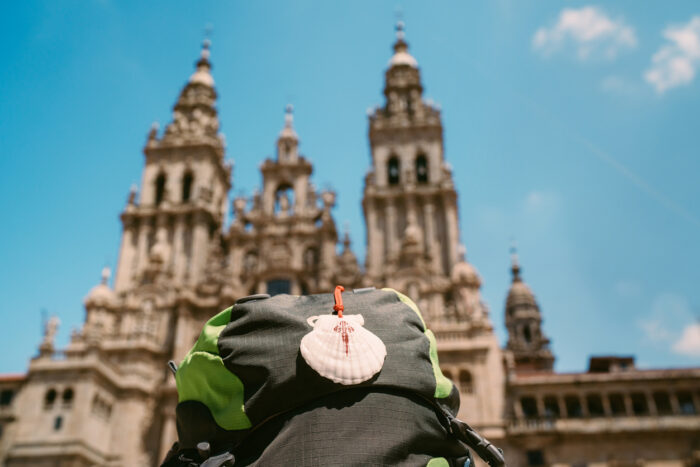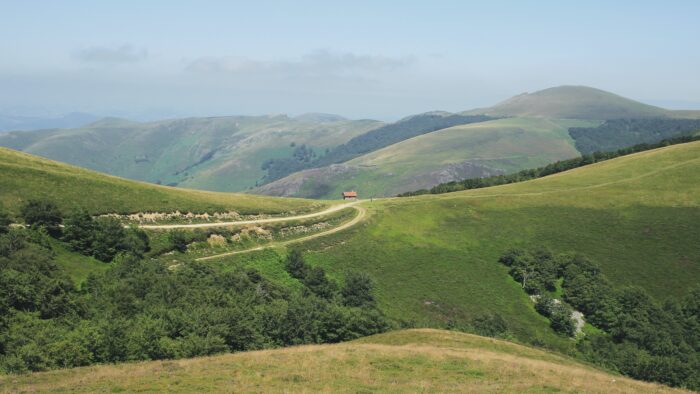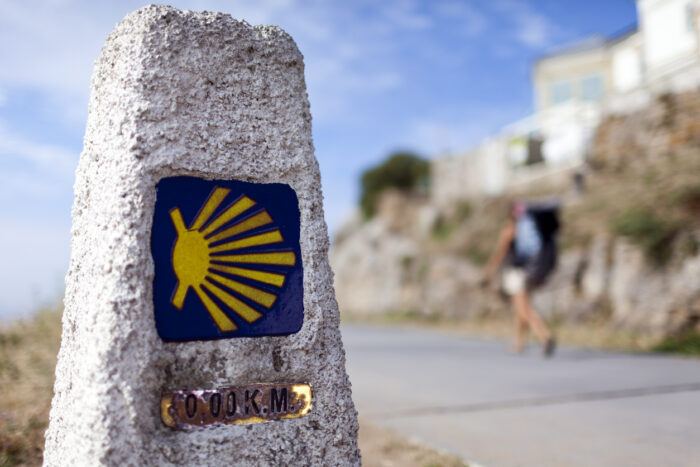The Complete Beginner's Guide to Camino de Santiago
Hitting refresh can be daunting… You are looking to make significant changes in your life but you are so busy with work, family, etc., you don’t even have the time to think how to go about it! Perhaps going on a really long walk/hike like the Camino de Santiago in Northern Spain might help clear your mind and help you set priorities that will make hitting refresh more manageable.

Anyone that has walked the Camino will tell you that it has had a profound impact on them; that the Camino truly allowed them to be present in the moment and to clear their minds. This ultimately helped them move forward during a transitional phase in their life – death of a loved one, divorce, becoming an empty nester, retirement, redundancies, recovery from illness, illness itself, etc. If you are curious about walking the Camino, we’ve got all you need to know in this Camino de Santiago for beginners guide!
What is the Camino De Santiago
The Camino de Santiago is a series of ancient pilgrimage routes throughout Europe all leading to the Cathedral of Santiago de Compostela in Northwestern Spain, where tradition has it that the remains of St. James, the Elder (Santiago in Spanish) are buried. In the Middle Ages, people throughout Europe flocked on foot to the tomb of Santiago in pursuit of miracles and indulgences or in penance. Starting in the 15th century, due to the Reformation and the Age of Enlightenment, pilgrimage to Santiago fell out of favor and pretty much disappeared.
In the 1970’s, a slow resurgence began and in the past 20 years, with the proliferation of books and films about the Camino, it has grown exponentially, with about 350,000 pilgrims arriving in Santiago in 2019. Modern-day pilgrims walk or cycle the Camino and take a more secular approach, embarking on the journey for a multitude of reasons beyond just the religious… spiritual, athletic or just as an opportunity to reflect, reset and refresh from whatever is weighing them down in life.
How Long Does it Take to Walk The Camino De Santiago?
A common question most people have when researching this adventure is how long does it take to walk the Camino de Santiago. The answer is that it depends on a variety of factors…
- Whether you are walking or cycling the Camino
- What route you are walking
- Where you decide to start
- How many miles/kilometers you are willing to walk each day
The most popular route to Santiago is the Camino Francés and one of its most popular starting points is St.-Jean-Pied-de-Port, a village on the French side of the Pyrenees. If you start in this village and walk an average of 24 km (~15 miles) per day, it would take you about 33 days to walk the roughly 800 km (~500 miles) to Santiago. If you are cycling, you would double the daily distance and the time frame would be about half that. But there is no rule saying that you MUST start in this town and walk or cycle this distance every day.

One can start further away in France or even in other countries in Europe. Or one can do the minimum distance required to receive the Compostela, the certificate of completion granted by the Pilgrim’s Office and walk the last 100km (70 miles) to Santiago. Of course, if you decide to walk shorter distances each day, the journey will take longer.
How to Pack for the Camino?
Most pilgrims carry all their belongings in a backpack… on their backs! Hence, you want to ensure you have what you need for your journey yet keep your pack as light as possible. A pack that is too heavy may lead to injuries impacting your overall Camino experience. For a comprehensive packing list, by a pilgrim for a pilgrim, check out our Ultimate Camino Packing List.
If this is your first time doing a long-distance hike, go to an outdoors equipment store and get educated about the different types of gear (shirts, pants, rain gear, hiking poles, etc.), get properly fitted for a backpack and try as many shoes as possible. THEN, go on as many training hikes you are able to do prior to your Camino and make sure your gear works for YOU.
Finally, avoid the temptation to think of every possible thing you might need. Spain is a first world country and you can find pretty much anything that you might need along the way. If you get to Spain and find that you have overpacked, you can always send stuff ahead to Santiago via Correos, the Spanish postal service, which holds packages for pilgrims up to 30 days.
What if I Get Lost on the Camino De Santiago?
It’s quite difficult to get lost on the Camino! There is both an abundance and a variety of markers on the way containing symbols of the Camino and all you need to do is be on the lookout for them and follow them… scallops shells laid on the ground, yellow arrows spray painted on sidewalks, and beautiful granite markers often containing both the shell and the arrow. In addition, in some sections you will also find traditional street signs indicating the path forward. Finally, depending on the time of the year and the route you are walking, all you have to do is follow the stream of pilgrims.

But if you were to get distracted and get on the wrong track, surely enough either a fellow pilgrim or a local will call out and point you in the right direction… Locals are very helpful and derive joy telling ¡peregina, por aqui!… Pilgrim, this way! And if this “intervention” doesn’t happen soon enough, you might just end up walking a few extra kilometers that particular day… And that just gives you more time for reflection, mediation and contemplation!
How Much Does It Cost to Walk the Camino?
The cost of the Camino will depend on:
- The length of your journey – Simply put, the longer your journey the more you will spend.
- The type of accommodations you chose to stay –Post pandemic, most albergues, traditional pilgrim hostels, range between 7 and 15 euros for a bunk in a shared dormitory. If the idea of sharing a room with a bunch of pilgrims is not appealing to you, you can get a private, double-occupancy room between 35 and 65 euros a night.
- How you chose to take your meals – Many establishments along the way offer a rustic, yet fulfilling three-course Pilgrim’s menu, including wine, for about 10-15 euros a person. A few albergues have kitchens and you may have the option of cooking your own meals or preparing yourself a sandwich or a salad.
- What route your take – A few routes, namely the Camino Português and the Camino del Norte, go through more affluent areas and tend to have slightly higher prices than the Camino Francés.
It’s possible to walk the Camino on about 35 euros a day if you are resourceful. But it’s important to have contingency funds in case you need medical attention or can’t get a bed in an albergue and need to upgrade to a private room.
How Do I Pick My Route on The Camino De Santiago?
Choosing a route is a very personal decision and will depend on what you are looking for… community, solitude, physical challenge, etc. Below you will find insight on each of the top five most travelled routes in 2021, per the Pilgrim’s Office:
- Camino Francés – 55%
- Camino Portugués – 19%
- Camino Primitivo – 6%
- Camino Inglés – 6%
- Camino del Norte – 5%
The Camino Francés and the Camino Portugués offer the best infrastructure along the way, meaning you’ll find more lodging options every 10-20 km (6-12 miles) and multiple cafés pretty much every 5km (3 miles). This is important if you want to have the option of walking shorter distances. The greater number of pilgrims on these two routes also creates more community than on other routes. In the summer months, however, this also translates into way more crowds than on other routes and often more difficulty in finding lodging.

The Camino Primitivo and Camino del Norte are physically more challenging both in terms of terrain and distances. At times, there are no cafes or lodging options in a 30 km (~20 miles) stretch. But the landscapes are incredibly stunning and the mountainous terrain can be beyond rewarding!
The Camino Inglés is a short, lesser travel route that you can complete in five days. If you are looking for total solitude and you are short on time, this might be a good option for you.
Camino Santiago for Beginners
The Camino de Santiago is an incredibly empowering experience. During the Camino your needs tend to be very basic—how are my feet doing, where will I sleep tonight and when will I eat! You are not thinking that if you don’t get “abc” done today, you won’t be able to tackle “xyz” tomorrow. The Camino allows you to slow down and live more simply; you are living out of a backpack after all! This in turn allows you to be more present in the moment and clear your mind—just what you need to contemplate a significant refresh!





2 thoughts on “The Complete Beginner’s Guide to Camino de Santiago”
This was a helpful summary, thank you. I’ve started reading guide books but the way you simplified this has helped me to decide our route.
Thank you so much for reading our article! I’m so glad you found it helpful.